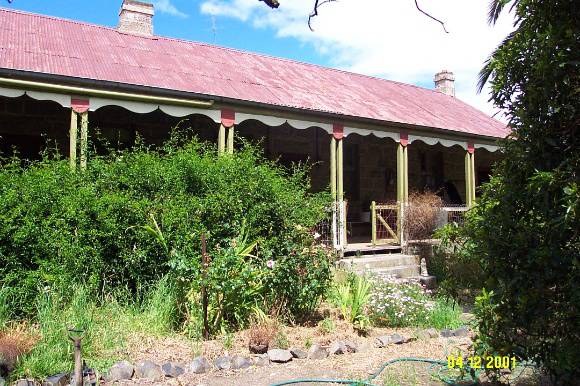| Back to search results » | Back to search page » |
|
CLUNIE HOMESTEAD COMPLEX
LocationGlenferrie Road, HARROW VIC 3317 - Property No 017
File Number101LevelStage 2 study complete |
|
Statement of Significance
What is significant?
The Clunie Homestead complex, is located three kilometres south of the township of Harrow overlooking the Glenelg River. Its most important owner was James Blair, the Police Magistrate at Portland, a Commissioner for Crown Lands and the holder of many other public and private positions. The complex comprises: the site of the original homestead, now demolished, adjacent to the main gate and close to the river; the main house which is sited on a rise about 1.5km from the original and set in a landscaped front and rear garden within a park; the meat house; the stables; the cow shed and yards; the worker's cottage and bathroom; the garage; the modern shed; the top shed or barn; and, at a distance, the woolshed, men's quarters and cookhouse. The homestead complex and some outbuildings are built from local stone. Other outbuildings are timber and iron. The main house (except for a weatherboard sleepout dating from about 1900 [double check date] and some later cement sheet additions) and the stables use a grey granite. The other stone buildings, including the woolshed, the men's quarters and cookhouse use a different granitic stone deeply stained by iron oxide. The top shed combines in-the-round timber posts, pit-sawn timber beams and joists, and machine dressed tongue and groove boards. Bricks for chimneys and other structures were made on the property. The forms and detailing of all of the buildings are simple and vernacular, suggesting that there was no professional contribution to their design. The dates of construction are not yet certain. The earliest homestead site may date from the early 1840s. Blair had erected a house and kitchen by 1853 or extended an existing building. From its detailing and materials, the main house appears to date from after 1864 but its bungalow form evokes an earlier period. The woolshed was built in the 1880s. The complex is substantially intact, most of the buildings are in good condition and all retain a very high degree of integrity.
How is it significant?
The Clunie Homestead Complex is of historical and architectural significance to the state of Victoria.
Why is it significant?
The Clunie Homestead complex is of historical significance as one of the earliest, most intact and extensive homestead complexes surviving in Western Victoria and in particular for its association with James Blair. It is of architectural significance for its early forms of construction, simple detailing and its setting. The woolshed is of particular interest for its size and quality of construction. The whole is representative of the north-western squatting runs which were distant from centres of population, located in a much drier climate and less subject to the closer settlement movement.
Extract of Statement of Significance taken from the Register of the National Estate:
Clunie Homestead, woolshed and stables at Harrow are typical homestead structures dating from the early years of pastoral development in western Victoria. James Blair was a distinguished district pioneer, being Commissioner for Crown Lands (1843-46) and a long serving Justice of the Peace. The house is most notable for the unusual plan and distinctive verandah valences. The use of different stone for the various homestead structures is also of interest.
(The Commission is in the process of developing and/or upgrading official statements for places listed prior to 1991. The above data was mainly provided by the nominator and has not yet been revised by the Commission.)
Description: Clunie Homestead pastoral run was established by Thomas Ricketts in August 1840. James Blair acquired the lease in October 1844 and had erected a house with kitchen, woolshed and outbuildings by 1853. The present single storey, coursed granite house with long north verandah and French door fenestration was apparently erected c 1864. The T-plan bluestone woolshed and sandstone stables are of unknown date.
Group
Farming and Grazing
Category
Homestead Complex






